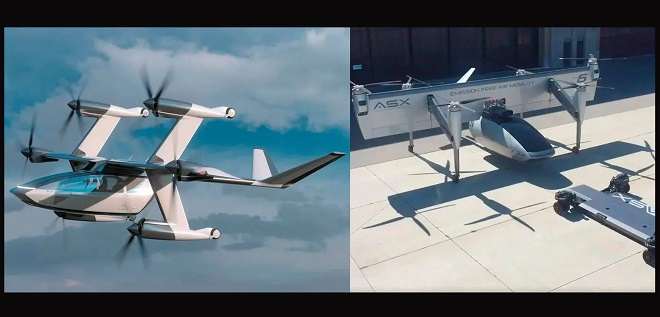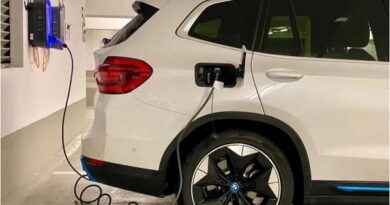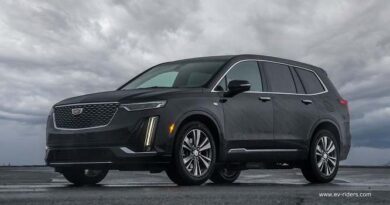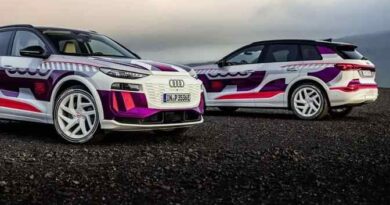eVTOL different from the rest of the electric planes
eVTOL different from the rest of the electric planes
The company Airspace Experience Technologies has presented a full-scale prototype of its modular eVTOL aircraft platform, Sigma-6, developed from an innovative and multi-purpose airframe.

Most eVTOL aircraft designs (electric and vertical takeoff and landing) are planned for the two phases into which the flight is divided: vertical elevation and descent and horizontal cruising. For their engines to achieve this dual role, there are two possibilities: separate horizontal and vertical thrust systems or vectored thrust designs that tilt their propulsion systems to make the aircraft roll vertically or horizontally.
This last option is the most used probably because the vertically oriented propellers can catch the wind in a hover situation, forcing the horizontal rotors to work harder to keep the aircraft level and stabilize the position.
A new airframe and propulsion system design
Airspace Experience Technologies (ASX) has unveiled a full-scale prototype of its modular eVTOL platform, Sigma-6. This Detroit company has opted for a tilt-wing concept that provides the vectoring thrust, on which the six large-diameter struts that hold the rotors are mounted. The movement of this huge 11.6 m wing is what is responsible for placing the rotors in a vertical and horizontal position.
The novelty is that these struts have wheels at the opposite end, which allows them to function as landing gear. This design makes it easy for the platform located under the cabin, also equipped with wheels, to be separated to move cargo or passengers. This part of the fuselage is therefore interchangeable and works as a functional skateboard robot for loading and unloading.
These cargo pods can each carry 900kg, while the passenger pods hold six to eight people. After the flight, in which speeds of up to 400 km/h can be reached the Sigma 6 will land and the capsules will uncouple from the fuselage by rolling on a small, autonomous, electric skateboard chassis with all-wheel drive and omnidirectional wheels. With these same robots, it is possible to lift and move the entire plane if necessary.
This solution allows batteries of 200 kWh capacity to be included in the pods, not in the airframe. According to ASX, each of them offers a flight range of 240 km. As the capsules are interchangeable, waiting times for recharging are eliminated by replacing the capsules with fully charged ones.
Project status
The aircraft presented is the sixth-generation prototype of the ASX, which has not yet been tested in flight. The company has raised $4.1 million in funding but is still soliciting and receiving small-scale investments through a crowdfunding platform. It has signed several memorandums of understanding with some potential customers for the delivery of 100 aircraft and a letter of intent from the US Department of the Navy’s Air Mobility Command.
ASX plans to start producing the first 100 units, already contracted, in 2025 with the collaboration of external contractors, while building its factory for mass production where, in 2027, it will assemble 500 units. To get to that point, you must first go through the long, tortuous, and expensive certification process by the FAA (Federal Aviation Authority of the United States) for which you will also need to raise a significant financial sum.
Related Post



